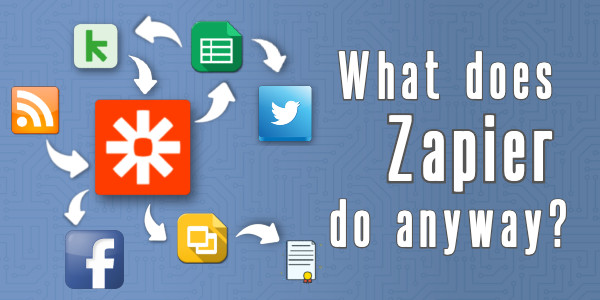Confession time: I can be kind of a technology laggard.
And I was slow to pick up Zapier – but it wasn’t due to my own resistance.
I knew Zapier was valuable. I had countless friends who depended on it – and time and time again it came up as the answer to seemingly unsolvable challenges.
But something about Zapier’s flexibility made it feel amorphous.
And for that reason, it took me years to really ‘get’ it.
Now it’s a critical part of my tech stack – and an invaluable resource for solving problems.
What does Zapier actually do?
I like to categorize tools – which is part of why I struggled with Zapier’s shapeshifting tendencies.
But if I had to pin it down I’d say it’s primary purpose is passing information between two or more systems.
It’s a connector. It helps tools speak.
Zapier lets Zoom talk to Keap.
It lets Keap talk to Xero.
It passes information from your inbox through to a google spreadsheet.
And so on – the use cases are (maybe literally) infinite.
And it’s that flexibility which can make it feel abstract – so to help contextualize it, I hosted a webinar featuring a panel of my friends, each sharing a real world scenario where they depend on Zapier.
Suzi, PJ, and the HerBusiness team use Zapier to populate an internal slack channel that lets them keep a pulse on important actions their contacts take.
In this one Kat shares how her Music Therapy Ed business uses Zapier to automatically create certificates when their students complete a course.
So it’s just a connector?
Not quite.
Now, you may have noticed earlier that I mentioned Zapier’s primary use case was as a connector.
There are two reasons I framed it that way.
First, because I’ve come to learn that Zapier actually does have some functionality of it’s own.
So you can pass information to Zapier, use it’s native functionality, and then pass it right back.
And the second reason I said primary is because it’s not just a connector.
It can also manipulate the information it’s relaying.
Examples Please
A simple example would be when a new contact is added to Keap, a Zap could be triggered that proper cases their name, turning TED lasso into Ted Lasso.
Or, a more nuanced example, you can set up a Zap to trigger when you publish a new blog post – and you can automatically tweet out a link to the fresh new post.
That would be a simple and direct Zapier recipe – but you could make it a little fancier by adding some custom verbiage to your tweet.
Like, maybe you use Zapier’s formatter function to truncate down the meta description of your blog post (and append an elipisis) so that it fits within Twitter’s allowed number of characters.
I guess the point I’m making is that Zapier is more than a connector – it can modify, or enrich the information it’s conveying.
More Zapier Examples
3 Times Zapier Saved the Day
Here’s a blog post of mine covering a few more examples of situations where Zapier helped us work around a challenge we were facing — Read More >>
—
Split Testing
Split testing in Keap has never been as straightforward as we might like. But this Zapier recipe allows you to automatically split your Keap contacts into two (or more) groups, which you can then use for running A/B tests in Keap —Read More >>
—
Certificates with Zapier
That super helpful Zapier Recipe that kat shared earlier was inspired by a blog post of mine (which was originally inspired by Kelsey Bratcher). Here’s a detailed tutorial for setting it up — Watch Demo >>
—
Random Rotating GIFs
One time my friend and award winning marketer Brett Fairbourn posed a challenge in the Grove that said “We send an automatic internal celebratory email when new clients sign up – how can I randomize the GIF we use in these emails?”, and wouldn’tcha know it, Zapier came through — Watch demo >>
—
Listen, I know there’s a lot here – and I’m not anyone to memorize it all and put it to work immediately; but I know how powerful Zapier is.
And I wish I’d understood it earlier.
So my hope is that by having this conversation, and sharing these real world use cases, we can help existing users find new ways to put Zapier to work and turn the Zap-curious into Zap-dabblers as well.
Thanks for reading. Please feel free to share your own Zapier use cases below!
Note: It should be said that I’m not a Zapier affiliate or anything – I have no invested interest in whether or not you use Zapier. I just like it, and believe in it.





